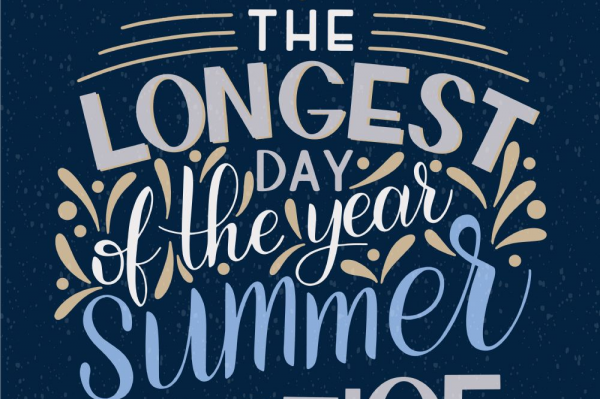
THE JUNE SOLSTICE
In the Northern Hemisphere, the June solstice ( summer solstice) happens when the Sun reaches its highest and northernmost points in the sky. This event marks the start of summer in the northern half of the globe. In the Southern Hemisphere, it’s the opposite: the June solstice marks the start of winter, when the Sun is at its lowest point in the sky.
WHEN IS THE SUMMER SOLSTICE?
In 2021, the June solstice happens on Sunday, June 20, at 11:32 P.M. EDT. This date marks the official beginning of summer in the Northern Hemisphere, occurring when Earth arrives at the point in its orbit where the North Pole is at its maximum tilt (approx 23.5 degrees) toward the Sun, resulting in the longest day and shortest night of the calendar year. At the time of the June solstice, the Northern Hemisphere receives sunlight at the most direct angle of the year.
The word “solstice” comes from Latin solstitium—from sol (Sun) and stitium (still or stopped). Due to Earth’s tilted axis, the Sun doesn’t rise in the same place in the sky each morning; its position moves northward or southward in the sky as we travel around it through the year. The June solstice is significant because the Sun reaches its northernmost point in the sky at this time, which makes it look the Sun’s path has stopped moving for a brief period of time.
After the solstice, the Sun appears to reverse course and head back in the opposite direction. The motion referred to here is the apparent path of the Sun when one views its position in the sky at the same time each day, for example, at local noon. Over the year, its path forms a sort of flattened figure eight, called an analemma. Of course, the Sun itself is not moving (unless you consider its own orbit around the Milky Way galaxy); instead, this change in position in the sky that we on Earth notice is caused by the tilt of Earth’s axis as it orbits the Sun, as well as Earth’s elliptical, rather than circular, orbit.
Does the Solstice Always Occur on the Same Day?
The timing of the June solstice is not based on a specific calendar date or time; it all depends on when the Sun reaches its northernmost point from the equator. Therefore, the solstice won’t always occur on the same day. Currently, it shifts between June 20, 21, and 22.
The Year’s Longest Day
The Summer Solstice is the day with the longest period of sunlight. Notice how the Sun appears highest in the sky at the solstice; its rays strike Earth at a more direct angle, causing the efficient warming we call summer. Because the Sun is highest in the sky on this day, you’ll notice that your shadow (at local, or solar, noon, not clock-time noon) is the shortest that it will be all year. [Local noon is when the Sun crosses the local meridian (an imaginary line between the North and South poles) and is the highest in the sky for the day.]
For those who live in the Southern Hemisphere, this is the shortest day of the year and marks the arrival of winter.
FREQUENTLY ASKED QUESTIONS
Q: IS THE SUMMER SOLSTICE THE FIRST DAY OF SUMMER?
A: Yes and no… Technically, it depends on whether we’re speaking about the meteorological or astronomical start of the season. Most meteorologists divide the year into four seasons based on the months and the temperature cycle, which allows them to compare and organize climate data more easily. In this system, summer begins on June 1 and ends on August 31. Therefore, the summer solstice is not considered to be the first day of summer, meteorologically speaking.
Astronomically, however, the first day of summer is said to be when the Sun reaches its highest point in the sky, which occurs on the summer solstice (June 20–22). Therefore, the summer solstice is considered to be the first day of summer, astronomically speaking.
Have a solstice evening bonfire!
Many northern people also celebrate a solstice holiday known as Midsummer’s Day on June 24, which is one of the four ancient quarter days of the year. The eve prior is called Midsummer’s Eve, marking the shortest night of the year. A common way to celebrate is to have a bonfire party! After all, these northern people have emerged from some long, dark winters! In the Austrian state of Tyrol, torches and bonfires are lit up on mountainsides, which is a stunningly beautiful sight.
According to ancient Latvian legend, Midsummer’s Eve (St. John’s Eve) on June 23 is spent awake by the glow of a bonfire and in pursuit of a magical fern flower—said to bring good luck—before cleansing one’s face in the morning dew.


